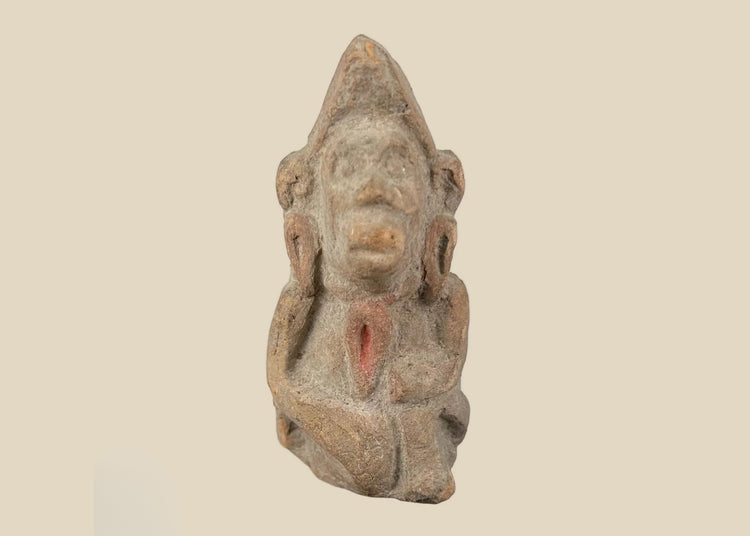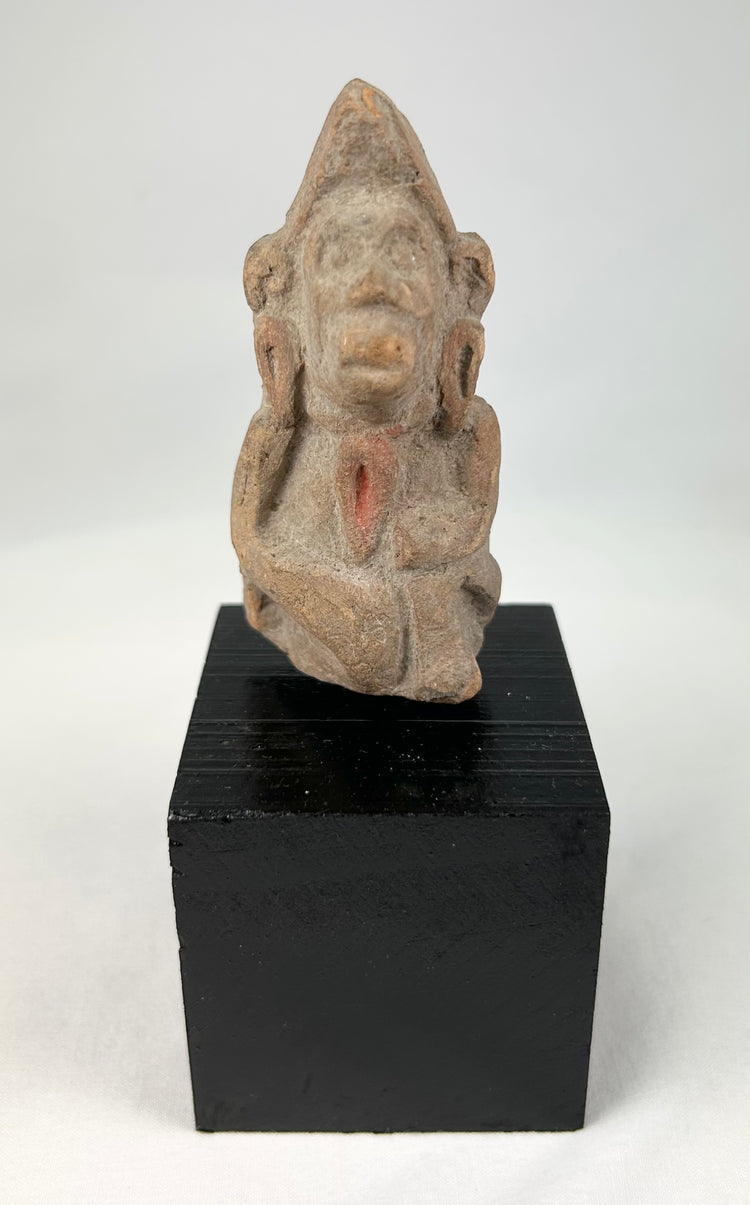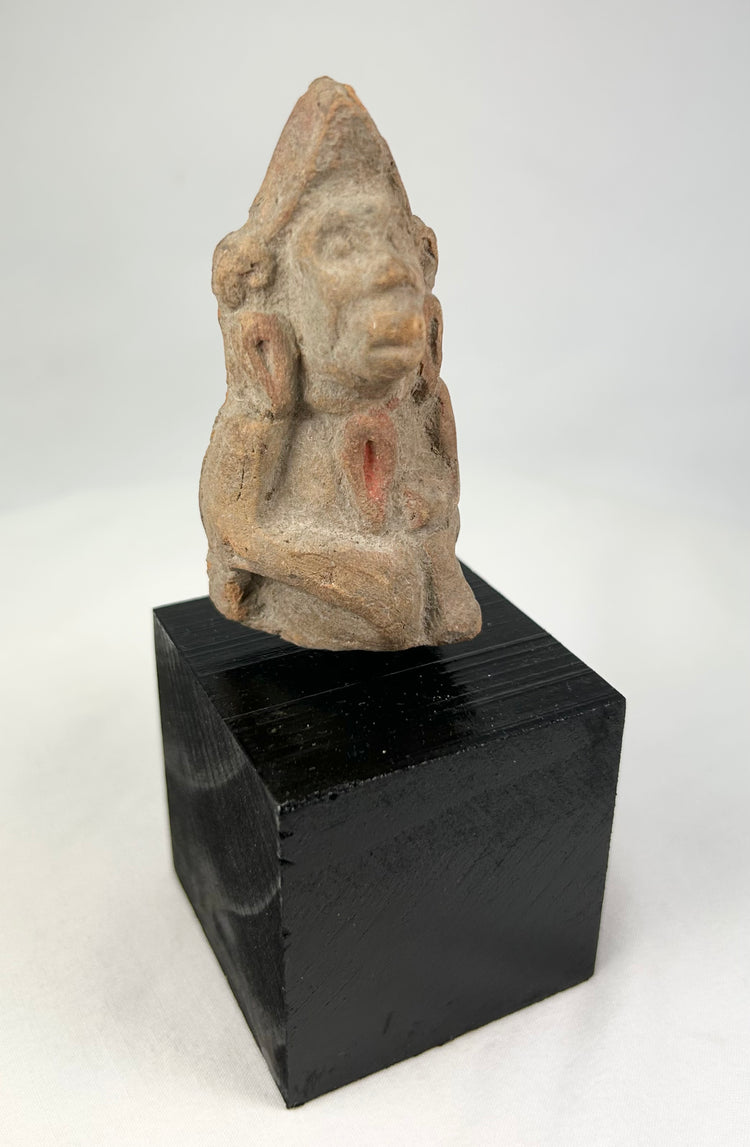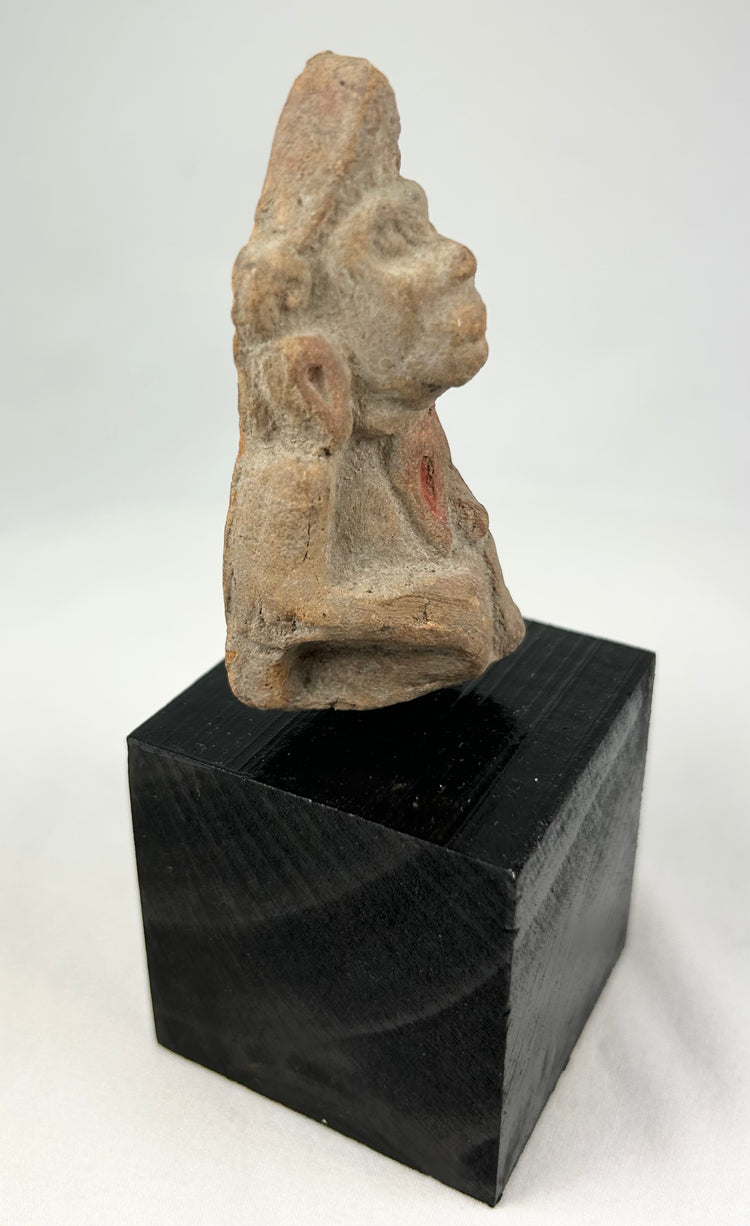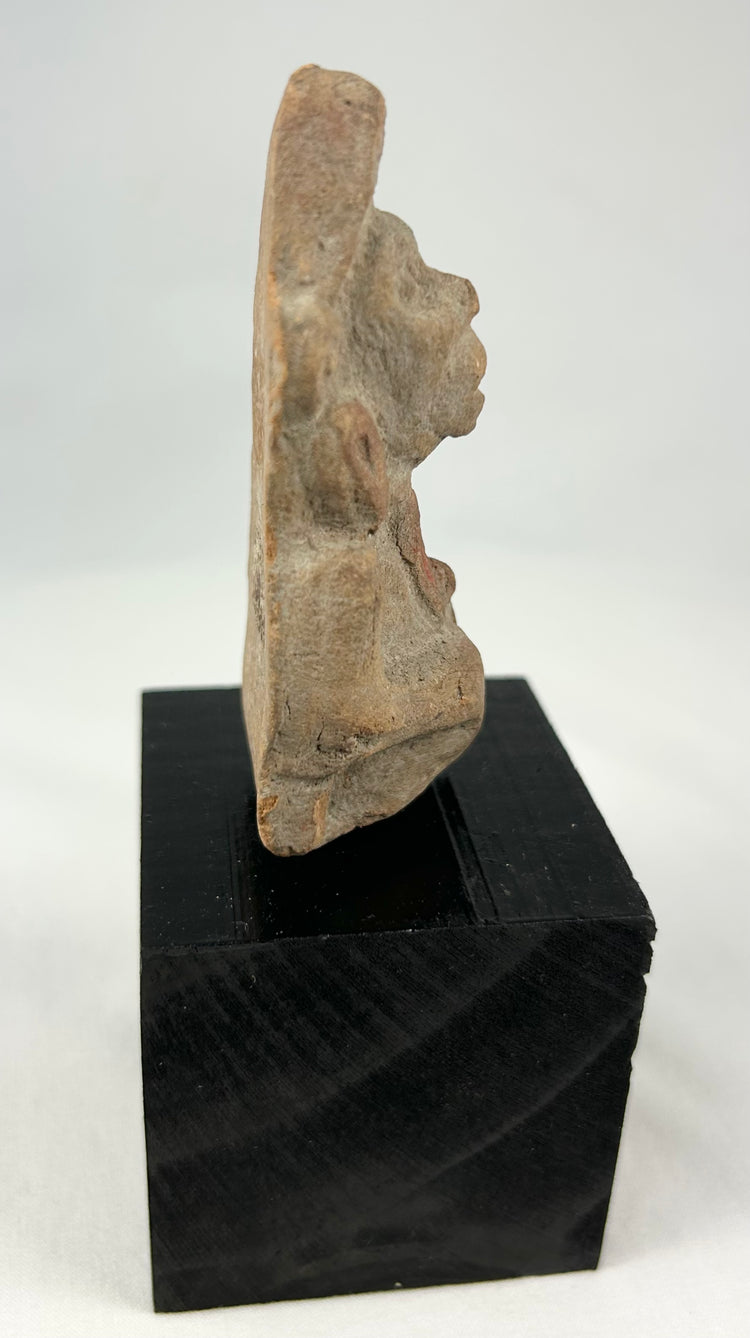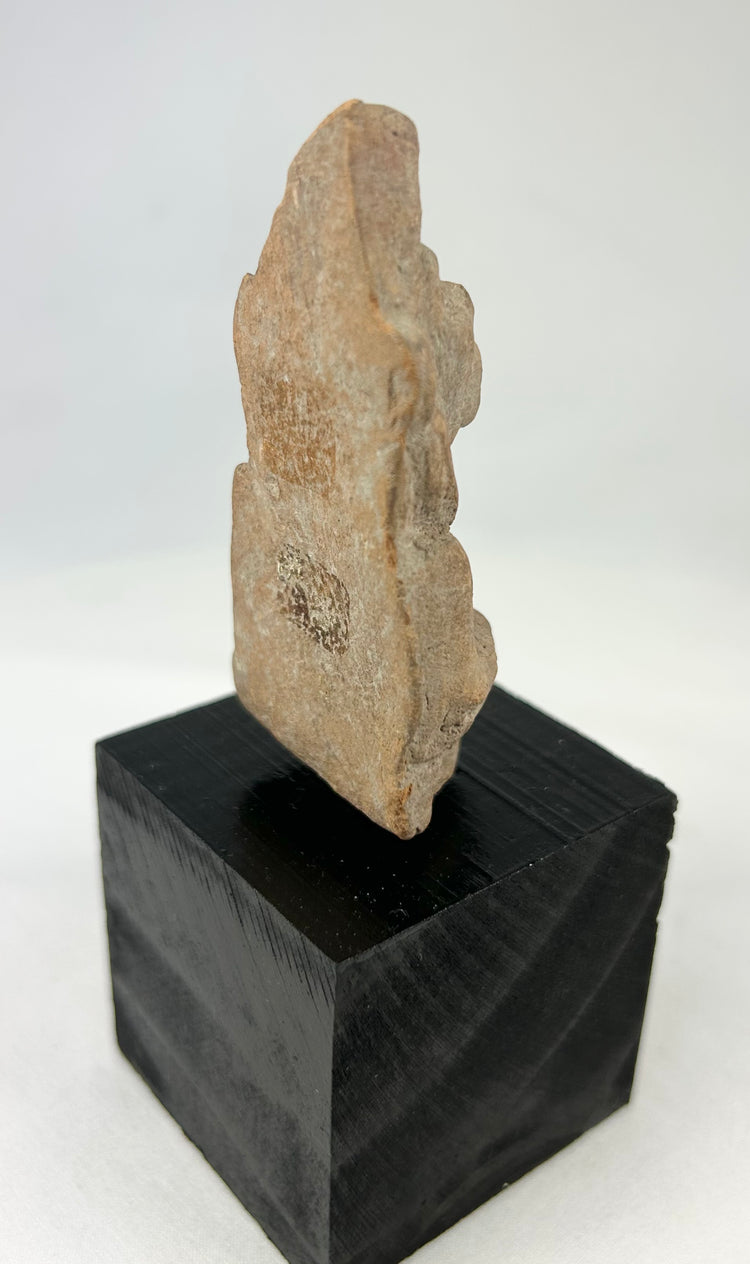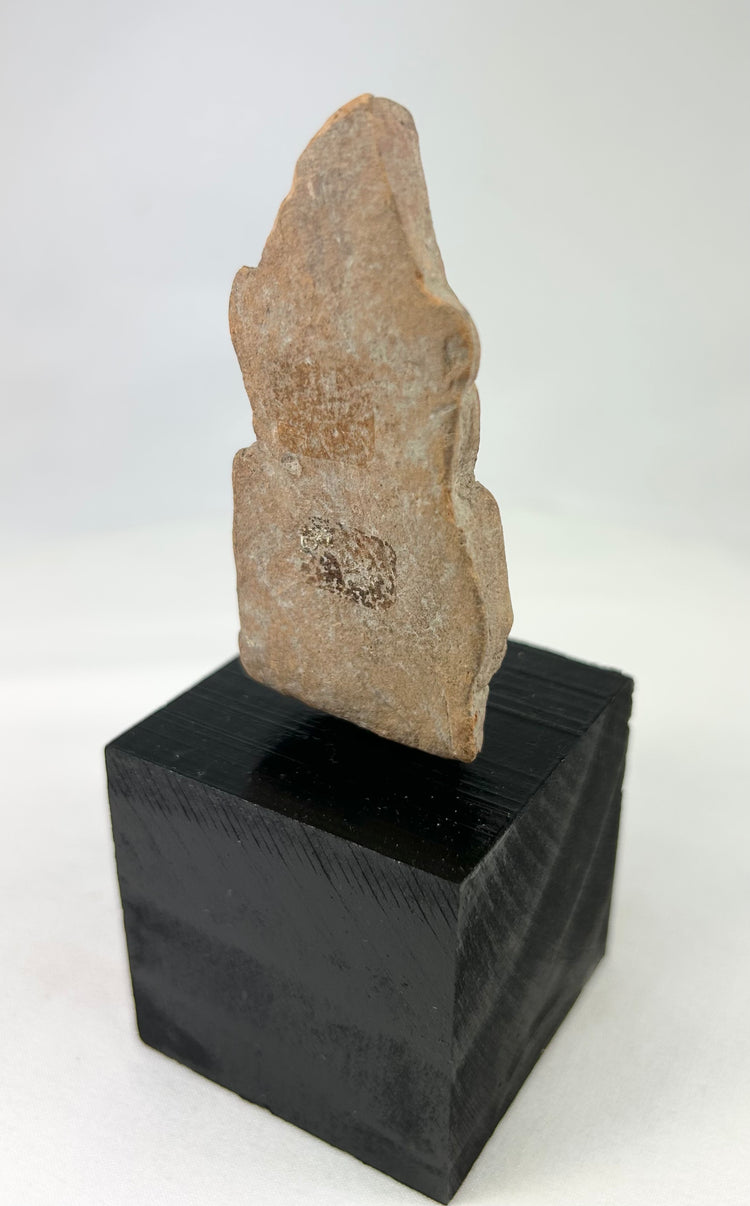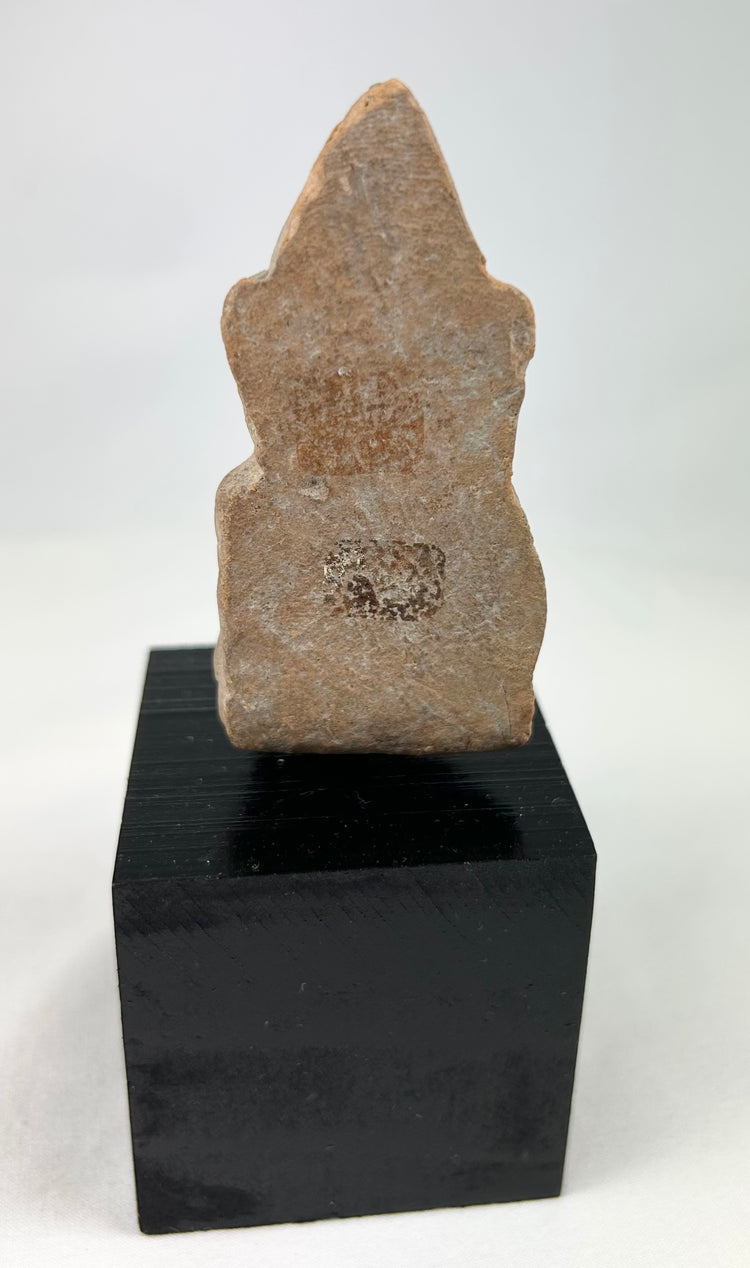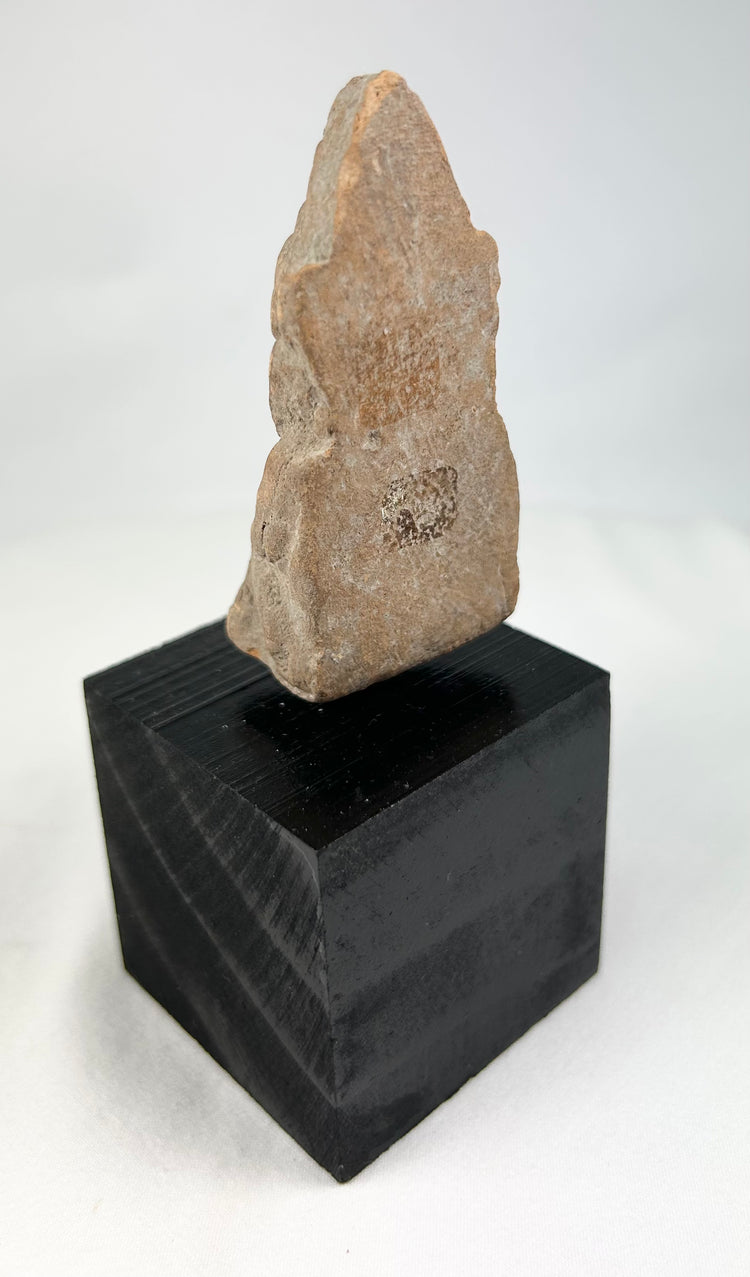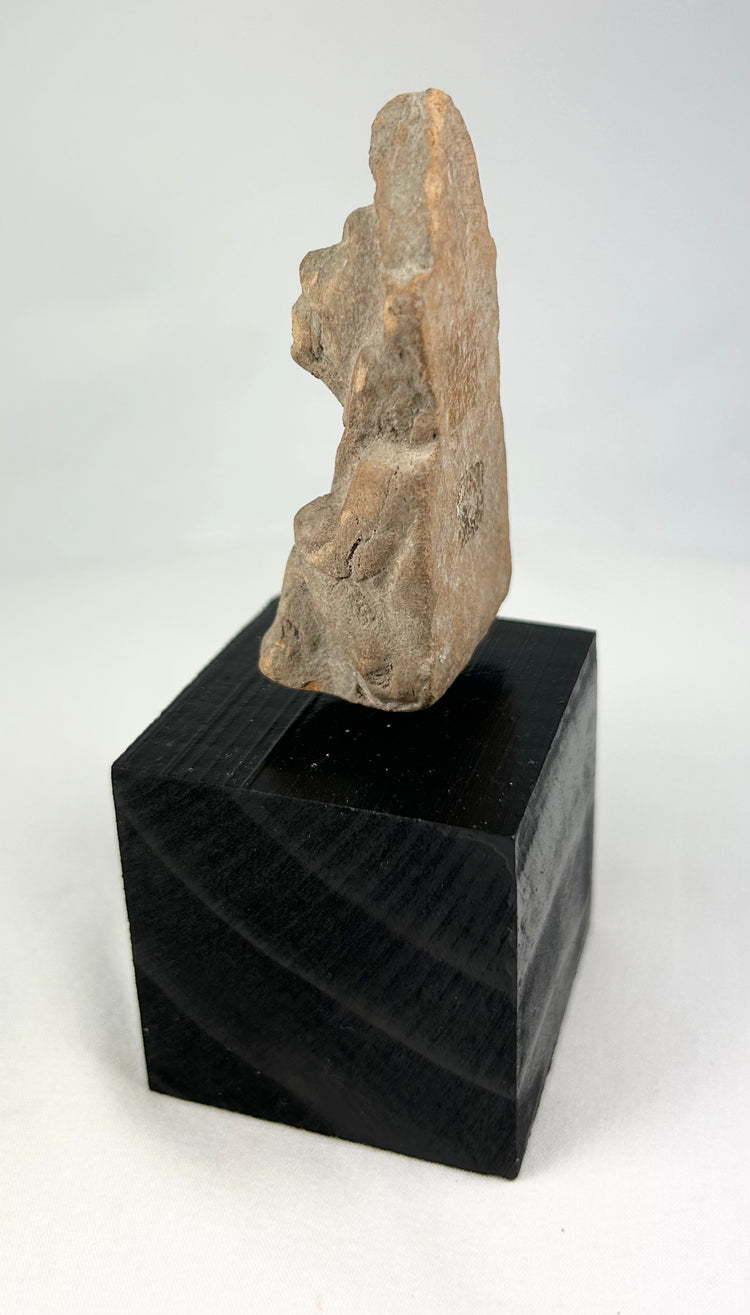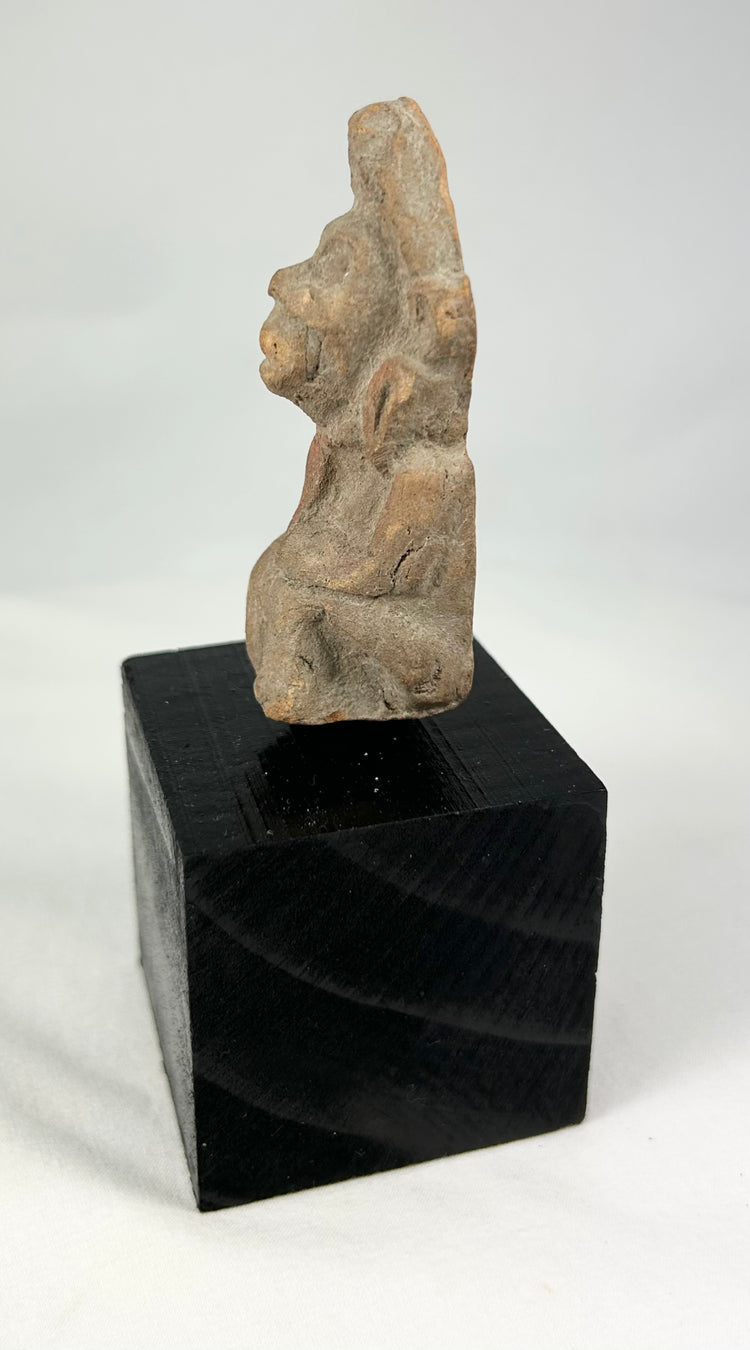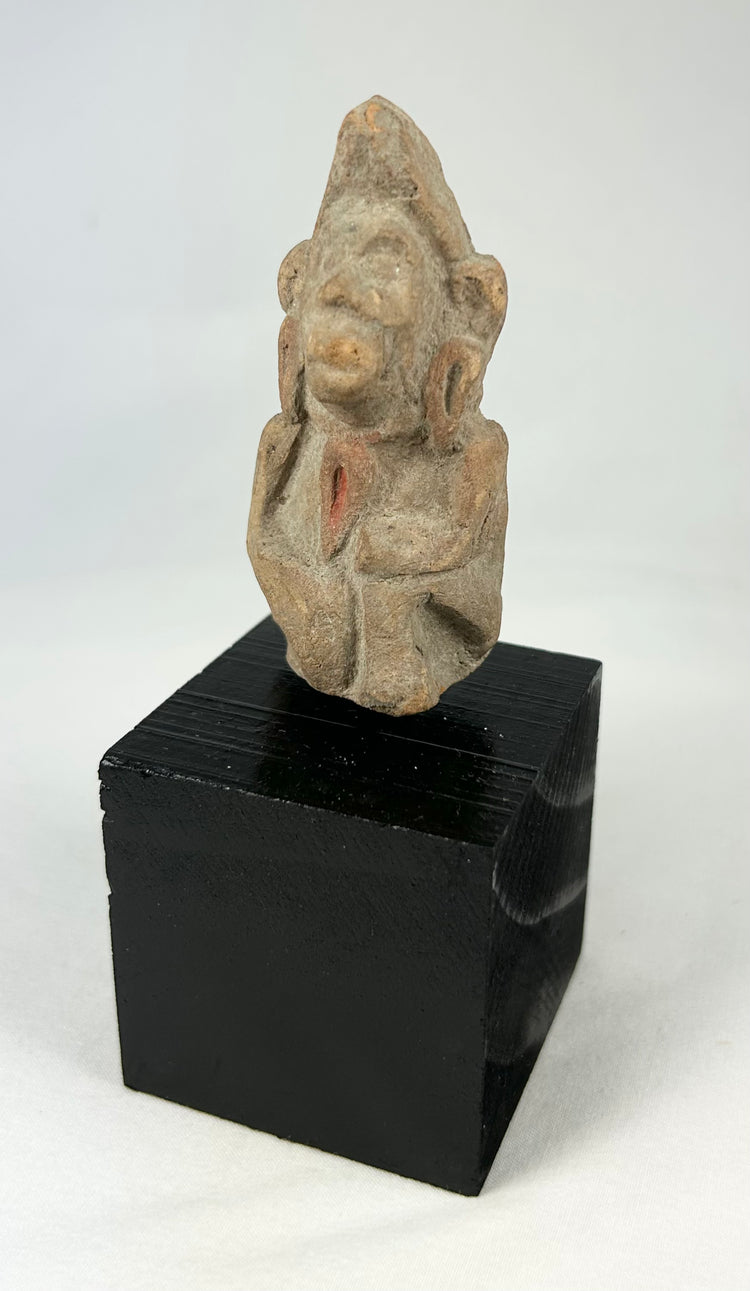Early Historic Clay Shrine Figure | Anthropomorphic Terracotta | Circa 300–600 CE
Description
More
Less
Historical Context & Origin
Region: South Asia (likely Northern India)
Material: Terracotta (baked clay) with traces of pigment
Period: Early Historic Period, circa 3rd–6th Century CE
Description
This hand-molded terracotta figurine represents a standing or seated deity or devotee, featuring stylized facial features, an elongated head or headdress, and schematic body proportions. Commonly used in domestic shrines and temple offerings, such figures served as devotional objects for everyday worshippers during the early centuries of the Common Era. The reddish clay retains earthen accretions, and faint remnants of pigment hint at its original decorative finish, enhancing its historic authenticity.
Features
- Hand-molded terracotta with stylized anthropomorphic form
- Elongated head or headdress with detailed facial features
- Flat back suitable for placement in shrines or as a votive figure
- Mounted on a modern black display base for presentation
Cultural Significance
Terracotta devotional figures were integral to early Indian religious practice, offering an accessible means for worshippers to engage with deities and protective spirits. Produced widely for domestic and temple use, they bridge artistic expression with lived ritual, reflecting the spiritual life of ordinary people. Each figure embodies both devotional function and the artistic conventions of its period.
Condition
Fragmentary yet stable, with age-related wear and surface erosion. Minor chipping and natural accretions are present. Securely mounted on a modern base for display.
Dimensions (approximate)
Height: 5 in
Width: 2 in
Depth: 2 in
Age
Circa 3rd–6th Century CE
Learn More
Discover a museum example of Historic Clay Shrine Figure artistry: Haniwa (Clay Sculpture) of a Female Shrine Attendant– The Met Museum
Explore a curated collection of clay figures at Relic and Rarity.
Description
Historical Context & Origin
Region: South Asia (likely Northern India)
Material: Terracotta (baked clay) with traces of pigment
Period: Early Historic Period, circa 3rd–6th Century CE
Description
This hand-molded terracotta figurine represents a standing or seated deity or devotee, featuring stylized facial features, an elongated head or headdress, and schematic body proportions. Commonly used in domestic shrines and temple offerings, such figures served as devotional objects for everyday worshippers during the early centuries of the Common Era. The reddish clay retains earthen accretions, and faint remnants of pigment hint at its original decorative finish, enhancing its historic authenticity.
Features
- Hand-molded terracotta with stylized anthropomorphic form
- Elongated head or headdress with detailed facial features
- Flat back suitable for placement in shrines or as a votive figure
- Mounted on a modern black display base for presentation
Cultural Significance
Terracotta devotional figures were integral to early Indian religious practice, offering an accessible means for worshippers to engage with deities and protective spirits. Produced widely for domestic and temple use, they bridge artistic expression with lived ritual, reflecting the spiritual life of ordinary people. Each figure embodies both devotional function and the artistic conventions of its period.
Condition
Fragmentary yet stable, with age-related wear and surface erosion. Minor chipping and natural accretions are present. Securely mounted on a modern base for display.
Dimensions (approximate)
Height: 5 in
Width: 2 in
Depth: 2 in
Age
Circa 3rd–6th Century CE
Learn More
Discover a museum example of Historic Clay Shrine Figure artistry: Haniwa (Clay Sculpture) of a Female Shrine Attendant– The Met Museum
Explore a curated collection of clay figures at Relic and Rarity.
You May Also Like






























